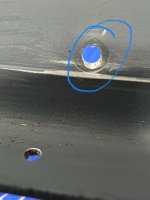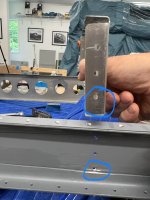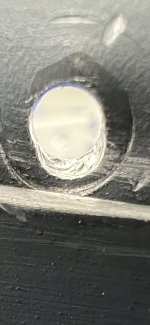P 6-5 Step 1 RV-10 plans. Riveting the VS skeleton together. Successfully squeezed the VS-106 top rib but had trouble getting the yoke around the flange on the rear spar to rivet the inspar rib. Used the 2x gun and bucking bar for the 470AD4-4 rivet and cleared it. Drilled out but enlarged the hole as in the pics. Would normally just use a -5 rivet but the hole is attached to the spar caps and I’m not sure the larger rivet head or shop head will clear it. Gonna. All Vans tomorrow but would appreciate any thoughts. In hindsight I think I jumped too soon to the gun and might have used the DRDT to set the rivet. Also it took a bit of work for the 2x and thinking for that rivet I should have used the 3X gun.





